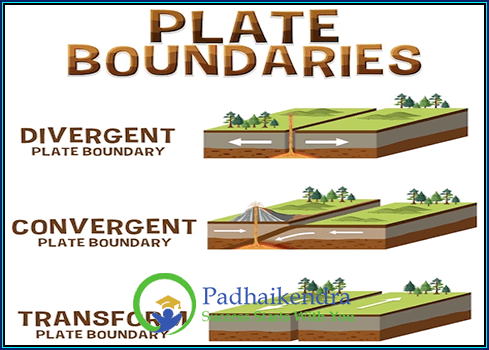There are three types of plate boundaries where tectonic plates interact with each other: divergent, convergent, and transform boundaries.
- Divergent boundary: At a divergent boundary, two plates move away from each other, creating a gap that is filled with molten magma from the mantle. This process leads to the formation of new oceanic crust and a mid-ocean ridge, where volcanic activity can occur. An example of a divergent boundary is the Mid-Atlantic Ridge.
- Convergent boundary: At a convergent boundary, two plates move towards each other. There are three types of convergent boundaries, depending on the types of plates involved:
- Oceanic-continental convergence: This occurs when an oceanic plate subducts beneath a continental plate, leading to the formation of a subduction zone. This process can result in the formation of mountain ranges, such as the Andes in South America.
- Oceanic-oceanic convergence: This occurs when two oceanic plates collide, and one plate is subducted beneath the other. This process can lead to the formation of volcanic island arcs, such as the Japanese Islands.
- Continental-continental convergence: This occurs when two continental plates collide. This process can result in the formation of mountain ranges, such as the Himalayas.
3.Transform boundary: At a transform boundary, two plates move past each other horizontally. This process can lead to the formation of strike-slip faults, which can cause earthquakes. An example of a transform boundary is the San Andreas Fault in California.
These plate boundaries are constantly changing as the plates move, leading to geological phenomena such as earthquakes, volcanic activity, and the creation of new oceanic crust.





